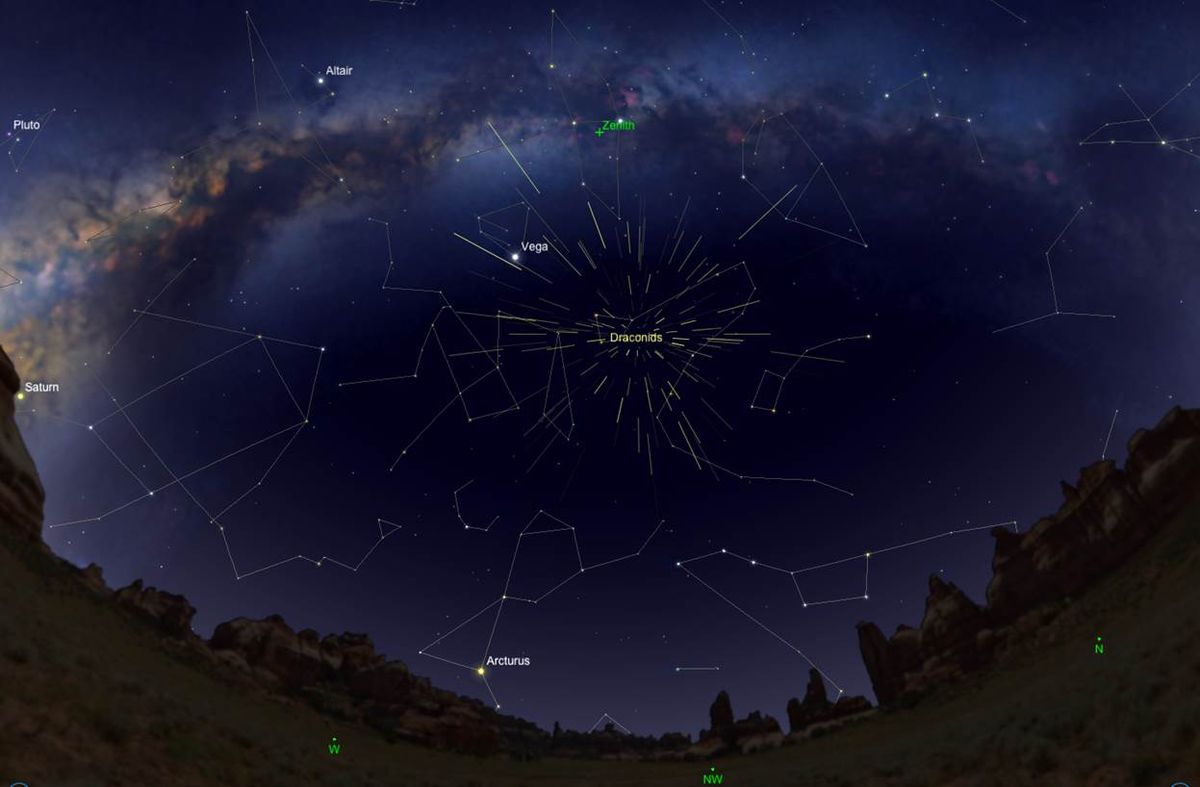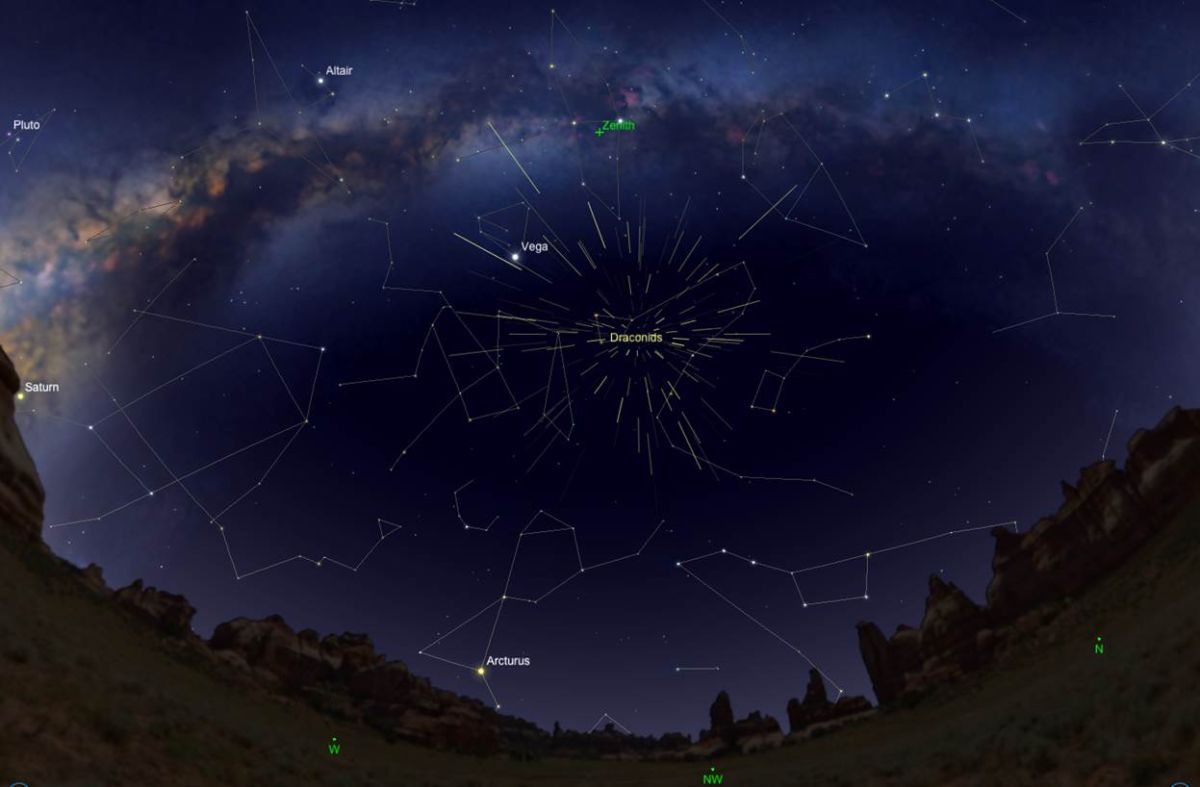
The Draconid meteor shower will peak on Sunday (Oct. 9), offering a chance to see fireballs appearing to originate from the dragon of the Draco constellation.
Unfortunately, this year’s peak coincides with October’s full Hunter’s Moon, meaning conditions are far from ideal for catching a glimpse of the Draconids. Still, the radiant point (the point from which the meteors appear to originate) should be highest in the sky just before nightfall, around 5:00 p.m. local time, meaning it may be possible to see some of the meteor shower around dusk before the full moon rises.
Under ideal dark-sky conditions, you might be able to see up to 10 Draconid meteors per hour, according to EarthSky (opens in new tab). Yet there have been years where hundreds of Draconids have been seen in a single hour, so even though conditions aren’t ideal with the full moon, it might still be worth it to try and see some of the dragon’s fireballs.
Related: Draco Constellation: Facts About the Dragon
The Draconids are sometimes referred to as the Giacobinids, because they are the remnants of the small periodic comet 21P/Giacobini-Zinner that was first discovered in 1900. The comet has a 6.6-year orbit and last made its closest approach to Earth in 2018 when it came closer than it had in 72 years. In 1985, the International Cometary Explorer, or ICE, became the first spacecraft to conduct a flyby of a comet when it observed 21P/Giacobini-Zinner, flying straight through the comet’s tail.
The Draconids have been somewhat quiet in recent years, but produced some of the most spectacular displays in the 20th century in 1933 and 1946 when thousands of meteors per hour were seen, according to the U.K. Meteor Network (opens in new tab).
To best see the Draconids or any other meteor shower, find a dark location and lean or lie back to get as wide a view of the sky as possible. Your eyes will take around 30 minutes to adjust to the dark.
If you want advice on how to photograph the Draconids or any other meteor shower, be sure not to miss our how to photograph meteors and meteor showers guide and if you need imaging gear, consider our best cameras for astrophotography and best lenses for astrophotography.
Follow Brett on Twitter at @bretttingley (opens in new tab). Follow us on Twitter @Spacedotcom (opens in new tab) or on Facebook (opens in new tab).



